While roses have long been cherished for their lovely fragrance and romantic blooms, rose-growing was the bane of gardeners for generations. Rose plants were susceptible to pests and diseases. They had very little tolerance for cold or excessive heat. They required constant pruning (not to mention a little praying!) to reach their full potential. Growing roses was just not worth the effort and frustration for many gardeners.
That all changed in 2000 thanks to the work of Wisconsin rosarian, William Radler. He had strived to create a rose hybrid that was hardier, more drought-tolerant, and more disease-resistant. His work yielded the knockout rose (Rosa ‘Radrazz’), a hybrid that almost instantly made rose-growing accessible to average gardeners, not just those with greenhouses and professional gear. Many believe the debut of the knockout rose at the turn of the century actually preserved, possibly even saved, the rose’s popularity.
Since their debut, knockouts have continued to evolve through hybridization. As a result, different bloom structures are available, most notably seen in the differences between knockout and double knockout roses (Rosa ‘Radtko’).
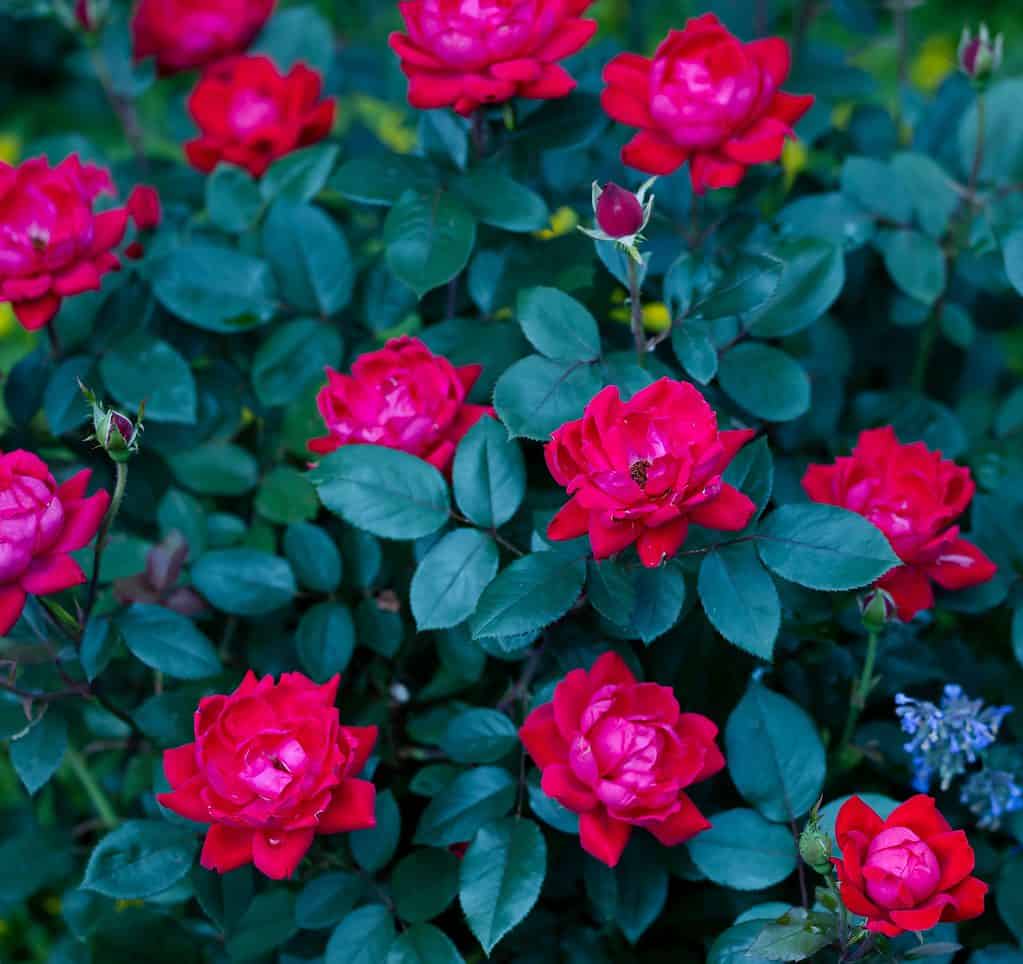
Knock Out roses made rose-growing accessible for the average gardener.
©Molly Shannon/Shutterstock.com
What’s the Difference?
The single and double knockout rose variation is found in the appearance of the flower’s petals. The single knockout rose looks like a single flower, while the double knockout rose appears to feature a secondary flower that grows in the center of the bloom, thus “doubling” each flower’s bloom.
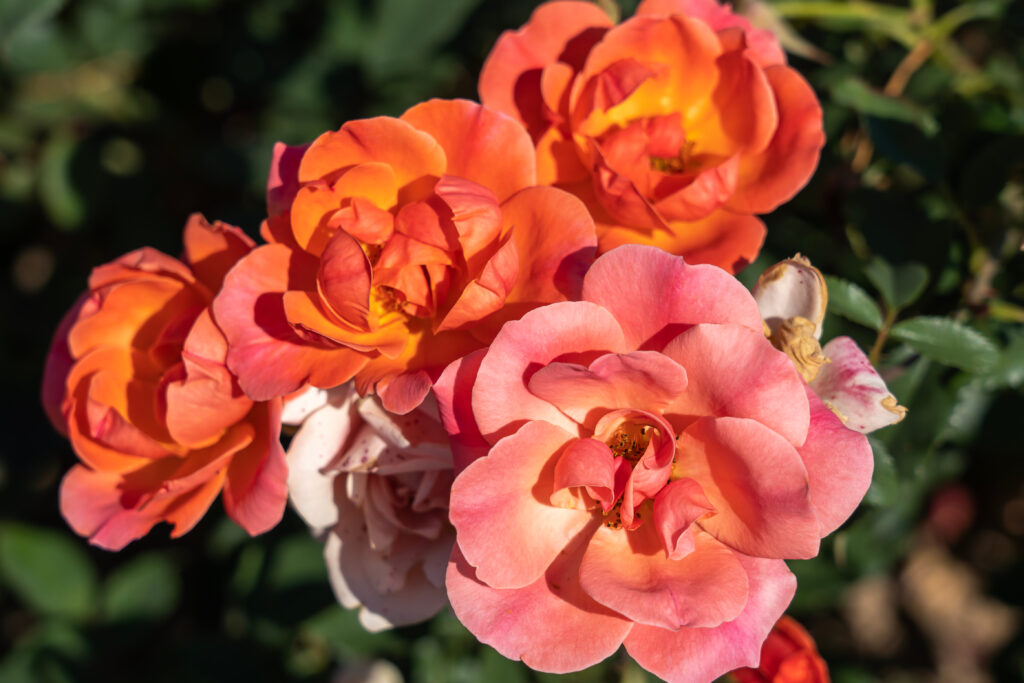
Single knockouts like this coral-colored rose feature a classic floral bloom.
©JHVEPhoto/Shutterstock.com
The double knockout rose is preferred by some gardeners because they like its fuller bloom features. Others prefer single knockout roses due to the wider variety of color options. Single knockouts are available in red, pink, yellow, white, and even bicolor. Double knockouts are only available in red or pink.
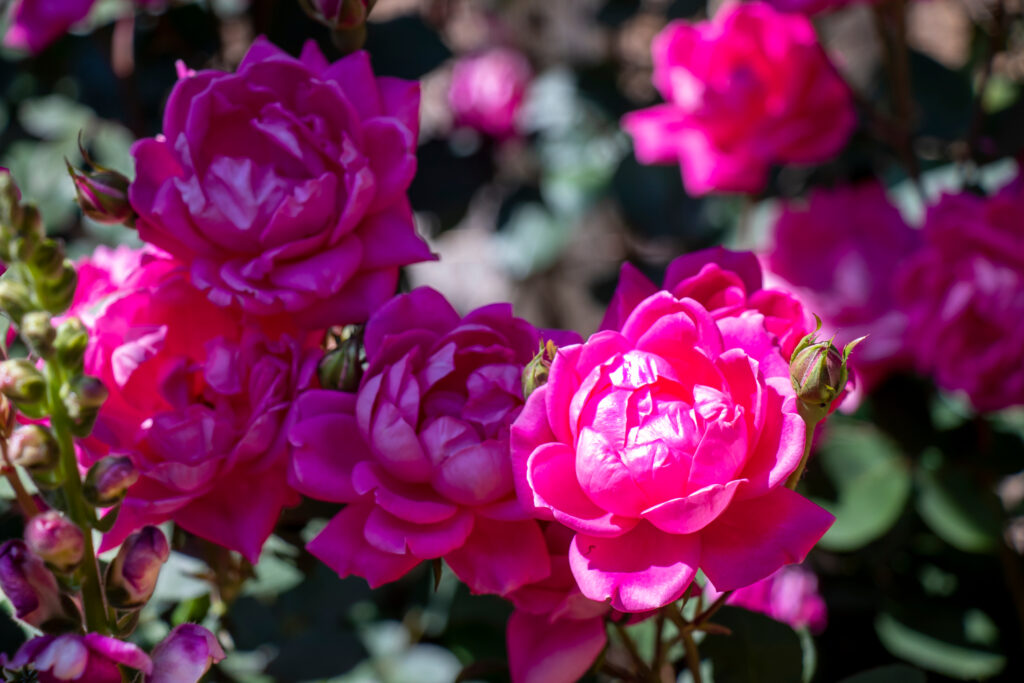
This cluster of double knockouts reveals the reason behind the “double” knockout name. The blooms are essentially doubled with a flower within a flower.
©Jen Wolf/Shutterstock.com
Growing Knockout Roses
There is virtually no difference in the required care for single or double knockout roses.
Site Selection
Like most roses, both knockouts fare best when given full sun. A site that receives at least six hours of sunlight daily is ideal.
Good drainage is also key. Knockout roses will not thrive in standing water.
Once the site is chosen, prepare the soil at least a month before planting the knockouts. Work up the soil and mix in a generous amount of organic matter, such as leaf mold, compost, or dehydrated manure.
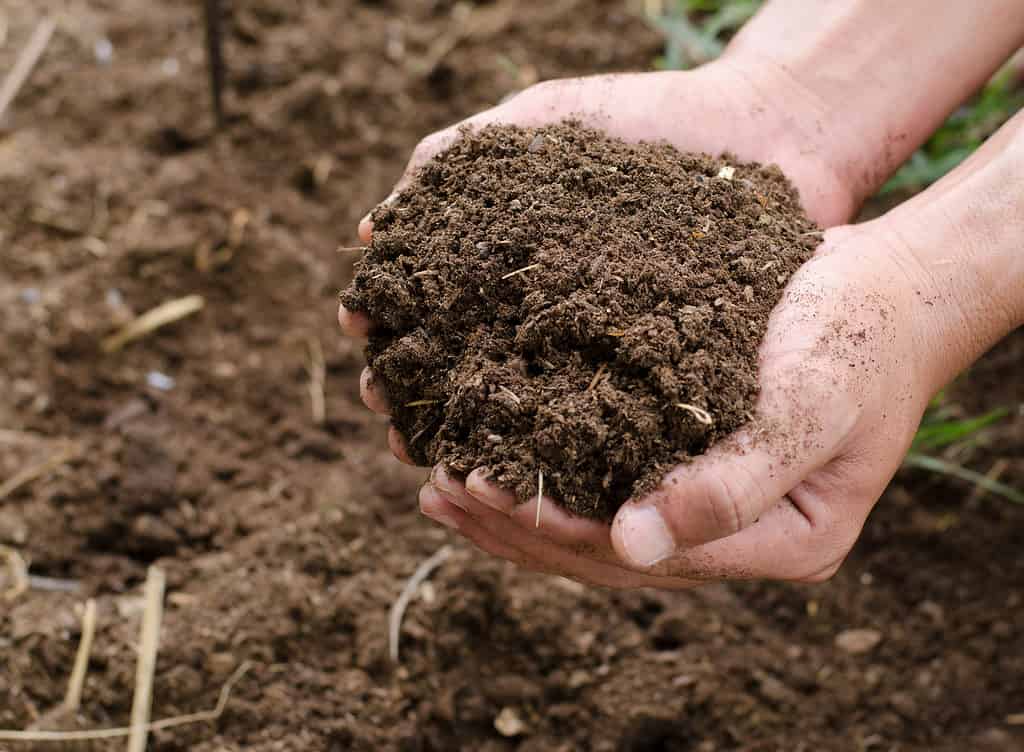
Preparing the soil at least a month before planting knockout roses is important for successful growth.
©Singkham/Shutterstock.com
Planting
When planting, dig a hole that is large enough to accommodate the root ball. Add even more organic material. Also, consider adding a bone meal. The compost or manure will give the plant immediate nutrition, while the bone meal will provide a slower release of nutrients over the growing season.
While knockout roses are far more disease-resistant than their predecessors, they still require consistent watering. Plan to water once or twice a week, adjusting to rainy or dry weather conditions.
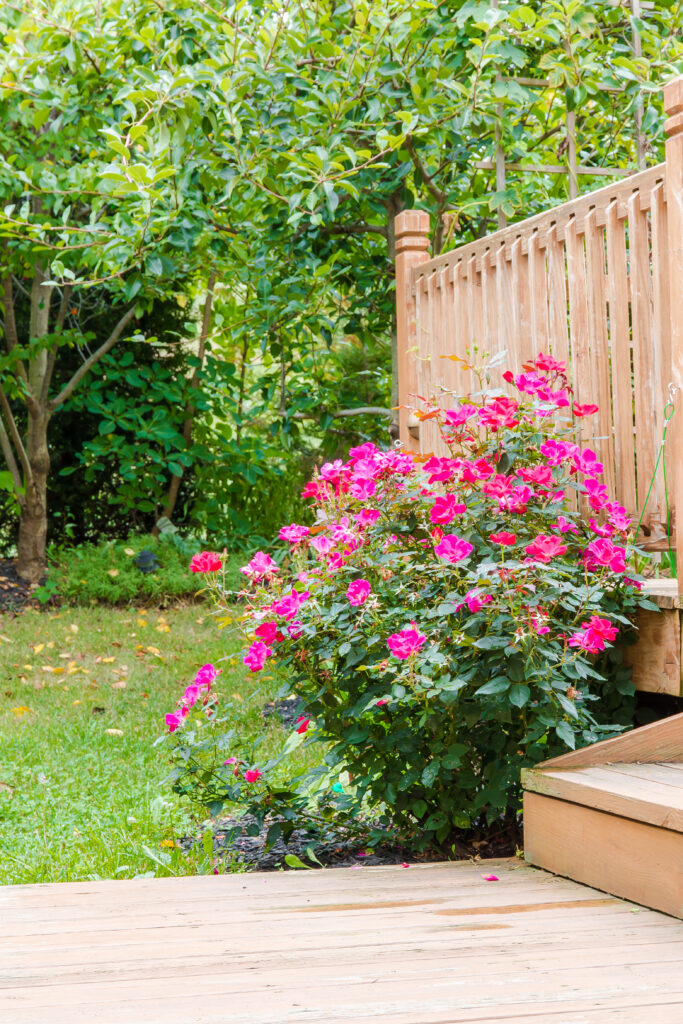
A knockout rose bush is a great accent to a backyard environment.
©iStock.com/volgariver
Care
Feed both single and double knockouts once or twice a month through the growing season. Choose a fertilizer (preferably organic) that is formulated specifically for roses. This will ensure the appropriate mix of nitrogen, potassium, and phosphorus.
Both knockout varieties have significant disease resistance, including a strong resistance to black spot disease.
Both are also clean roses, meaning spent blooms will naturally fall off. No deadheading is required. Single and double knockouts are continuous bloomers that will provide color from spring until the first frost in the fall.
Minimal pruning is needed for both varieties, usually only once a year. Pruning is best done in the early spring while the plant is still in winter dormancy. Remember that knockout roses are among the thorniest roses on the market. Thick gardening gloves are a must when working with these plants!
Prune to shape the plant, as well as to remove any crossed or interior branches. Every 2-3 years, prune away the old canes to encourage new cane growth. Also, remove any weakened canes so all the plant’s nutrients can be focused on the strong, healthy canes.
Single and double knockouts, like all roses, are non-toxic to both pets and people.
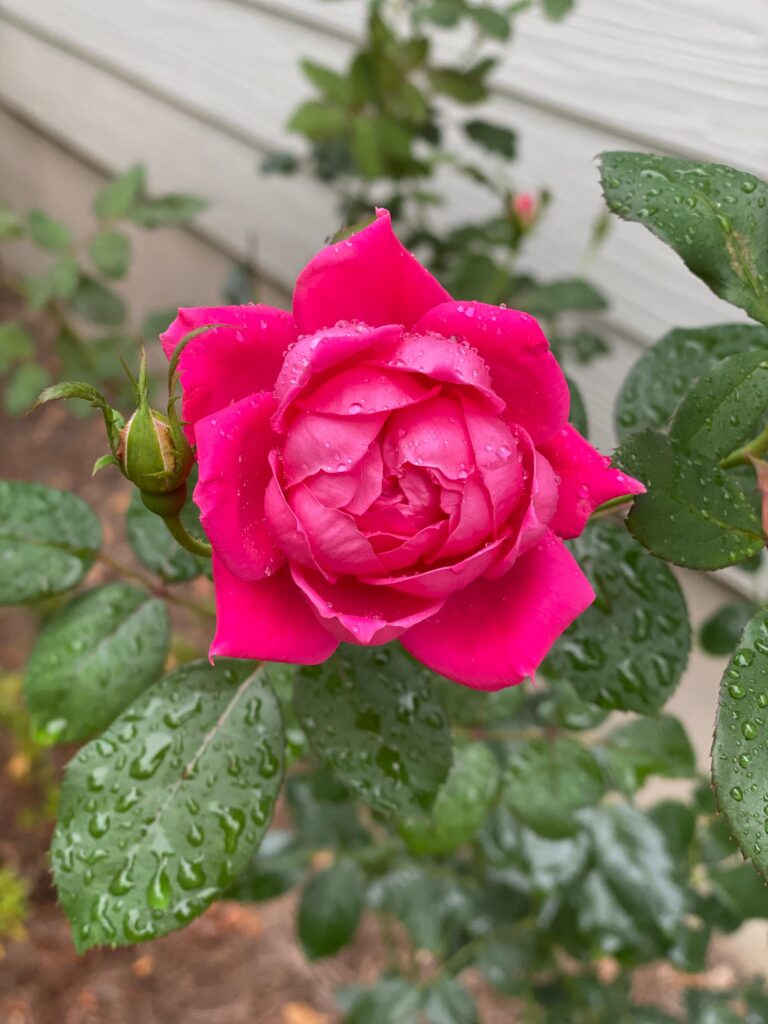
Knockout roses are stunners, such as this lovely pink knockout!
©Emerald Pine Collective/Shutterstock.com
Get Ready for a Knockout!
There was a time when receiving a bouquet of roses would cause the recipient to gush with appreciation, but attempting to cultivate and grow those same roses would prompt gardeners to utter some, shall we say, other words.
But, thanks to Radler and other rosarians, the market is filled with rose hybrids that made rose-growing accessible for the lay gardener. Single and double knockout roses are among the easiest of them all to care for. Decide which bloom pattern you prefer, single or double. After that, get ready for a rose display that really will knock you out!
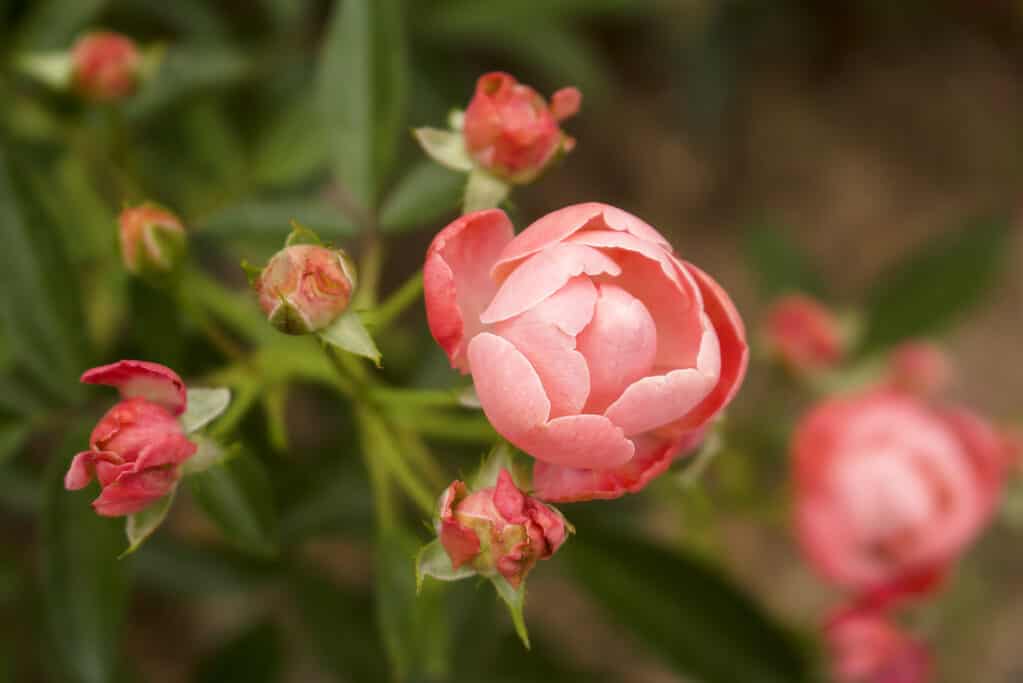
This coral single knockout bloom would look great in your garden!
©iStock.com/AnaFidalgo
The photo featured at the top of this post is © JHVEPhoto/Shutterstock.com
Thank you for reading! Have some feedback for us? Contact the AZ Animals editorial team.






